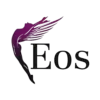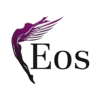Table of Contents
ToggleHere are Singapore’s statutory updates for 2025
Effective July 2025
Singapore Implements Significant Updates to Foreign Worker Regulations
The Ministry of Manpower (MOM) has announced substantial changes to Work Permit and S Pass regulations, aiming to enhance workforce quality and align with Singapore’s economic priorities.
Key Details:
- Work Permit Holders:
- Removal of Maximum Employment Period: Effective 1 July 2025, the previous employment duration cap of 14–26 years for Work Permit holders will be abolished.
- Increase in Maximum Employment Age: The maximum employment age for Work Permit holders will be raised to 63.
- Expansion of Approved Source Countries: Bhutan, Cambodia, and Laos will be added to the list of approved source countries for Work Permit holders.
- Expansion of Non-Traditional Sources Occupation List (NTS-OL): The NTS-OL will now include heavy vehicle drivers and various manufacturing roles.
- S Pass Holders:
- Minimum Qualifying Salary Increase: For new applications submitted on or after 1 September 2025, and renewals expiring on or after 1 September 2026:
- All sectors (excluding financial services): The minimum qualifying salary will increase from SG$3,150 to at least SG$3,300.
- Financial services sector: The minimum qualifying salary will increase from SG$3,650 to at least SG$3,800.
- Levy Increase: Beginning 1 September 2025, the S Pass Basic/Tier 1 levy will rise from SG$550 to SG$650.
- Minimum Qualifying Salary Increase: For new applications submitted on or after 1 September 2025, and renewals expiring on or after 1 September 2026:
Source: BAL Immigration News
Effective May 2025
Singapore Enhances M-SEP Scheme for Strategic Workforce Support
The Ministry of Manpower (MOM) has updated the Manpower for Strategic Economic Priorities (M-SEP) scheme to better support firms contributing to Singapore’s economic goals.
Key Details:
- Support period extended from 2 to 3 years.
- More eligible programmes under Conditions 1 and 2.
- New pathway under Condition 2: sending local employees for overseas exposure or leadership development.
- To qualify, firms must:
- Be involved in key economic initiatives supported by agencies like EDB, EnterpriseSG, IMDA, MPA, or STB.
- Commit to hiring, training, or developing local employees.
- Eligible firms can receive up to 5% additional S Pass and Work Permit quota (max 50 workers).
- Renewal depends on ongoing fulfilment of criteria.
Source: Ministry of Manpower (MOM)
Effective April 2025
Singapore Expands Parental Leave Benefits
Singapore has passed new legislation enhancing parental leave entitlements to promote shared caregiving responsibilities and support family well-being.
Key Details:
- Extended Paternity Leave: Government-paid paternity leave will increase from two weeks to four weeks for fathers of children born from 1 April 2025.
- New Shared Parental Leave: From 1 April 2025, mothers can share up to six weeks of their maternity leave with fathers. This will increase to ten weeks for children born from 1 April 2026.
- Phased Implementation: The staggered rollout allows employers time to adjust to the new policies.
Source: Channel News Asia
Effective January 2025
Singapore Tax Updates for 2025
Singapore has introduced several key tax changes for individuals and businesses in 2025:
Personal Income Tax Updates
- Higher Rates for High Earners: Individuals earning over SGD 500,000 annually will face higher income tax rates from YA 2025.
- Enhanced Reliefs: Higher tax relief caps for CPF contributions and dependent-related deductions.
Corporate Tax Updates
- Minimum Effective Tax Rate (METR): A 15% METR for large multinational enterprises, aligning with the OECD’s BEPS 2.0 framework.
- Extended Tax Incentives: Grants like the Productivity Solutions Grant (PSG) continue through 2025.
GST Adjustments
- GST rate increased from 8% to 9% as of 1 January 2025, completing the planned hike.
Property and Digital Taxation
- Property Taxes: Higher rates for luxury residential properties.
- Digital Asset Taxation: Clearer guidelines on taxing cryptocurrency and NFT transactions.
E-Invoicing Mandate
- Businesses must adopt e-invoicing from 2025 for improved compliance.
Source: EBOS SG
Singapore Implements Global Minimum Tax Rules
Singapore will introduce the Global Anti-Base Erosion (GloBE) Rules and the Domestic Top-up Tax (DTT) for multinational enterprises (MNEs) with fiscal years starting on or after 1 January 2025.
Key Details:
- Domestic Top-up Tax (DTT): Ensures that MNEs operating in Singapore pay an effective tax rate of 15%. Applicable to MNE groups with annual revenues of at least €750 million.
- Income Inclusion Rule (IIR) and Undertaxed Profits Rule (UTPR): Both will take effect in 2025, aligning with international efforts under the OECD’s Base Erosion and Profit Shifting (BEPS) framework.
Considerations:
- Businesses with operations in jurisdictions implementing GloBE rules in 2024 (e.g., South Korea, Switzerland, and the UK) may still be impacted earlier.
- Singapore’s government has extended some existing tax incentive regimes to maintain its competitiveness while reviewing broader industry development schemes.
Source: Ernst & Young Global
Revised Employment Pass (EP) Qualifying Salaries
The Ministry of Manpower (MOM) has announced updated salary requirements for Employment Pass applications and renewals:
- General sectors: Minimum monthly salary increases to SGD 5,600 (up from SGD 5,000) and scales with age, reaching SGD 10,700 for applicants aged 45 and above.
- Financial services sector: Minimum monthly salary rises to SGD 6,200 (up from SGD 5,500), scaling to SGD 11,800 for those aged 45 and above.
These changes apply to new EP applications from January 2025 and renewals for EPs expiring from January 2026.
Source: MOM
New Parental Leave Scheme and Mandatory GPPL
Starting 1 April 2025, the current shared parental leave scheme will be replaced with a new arrangement offering 10 weeks of paid parental leave shared between both parents. The scheme will roll out in two phases: six weeks of shared leave from 1 April 2025, increasing to 10 weeks from 1 April 2026. This entitlement is in addition to existing GPML and Government-Paid Paternity Leave (GPPL) benefits.
Additionally, effective 1 April 2025, the additional two weeks of voluntary GPPL will become mandatory. Eligible working fathers of Singapore citizen children born on or after this date will be entitled to a total of four weeks of GPPL.
Increase in CPF Ordinary Wage Ceiling
The CPF Ordinary Wage (OW) ceiling will increase to $7,400 in 2025 as part of a phased increase to $8,000 by 2026. This ceiling determines the maximum monthly Ordinary Wages eligible for CPF contributions.
The CPF annual salary ceiling remains at $102,000, with no changes to the Additional Wage ceiling or CPF Annual Limit of $37,740.
Source: CPF
Increase in CPF Contribution Rates for Senior Workers
The Central Provident Fund Board (CPFB) of Singapore has announced an increase in CPF contribution rates effective 1 January 2025, specifically for Singapore Citizens and Singapore Permanent Residents (3rd year onwards) aged 55 to 70 with monthly wages exceeding $750. Key changes include:
- CPF Contribution Rates:
- For employees aged 55 and below, the total contribution rate remains at 37% (employer: 17%, employee: 20%).
- For employees aged above 55 to 60, the rate will increase from 31% to 32.5% (employer: 15.5%, employee: 17%).
- For employees aged above 60 to 65, the rate will increase from 22% to 23.5% (employer: 12%, employee: 11.5%).
- For employees aged above 65 to 70, the rate remains at 16.5% (employer: 9%, employee: 7.5%).
- For employees aged above 70, the rate remains at 12.5% (employer: 7.5%, employee: 5%).
- Phased Contribution for Lower Wages: Phased contribution rates for employees earning between $500 and $750 per month will continue.
- Allocation of Contributions: With the closure of the Special Account (SA), increased contributions will now be fully allocated to the Retirement Account (RA) up to the Full Retirement Sum (FRS). If the FRS has already been met, contributions will be directed to the Ordinary Account.
These adjustments are intended to strengthen retirement savings for senior workers.
Source: CPF






